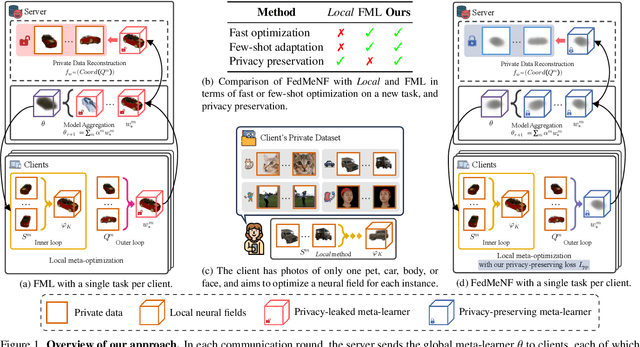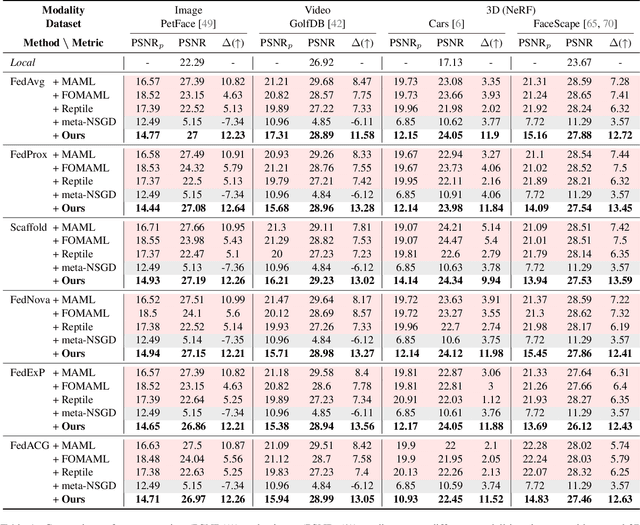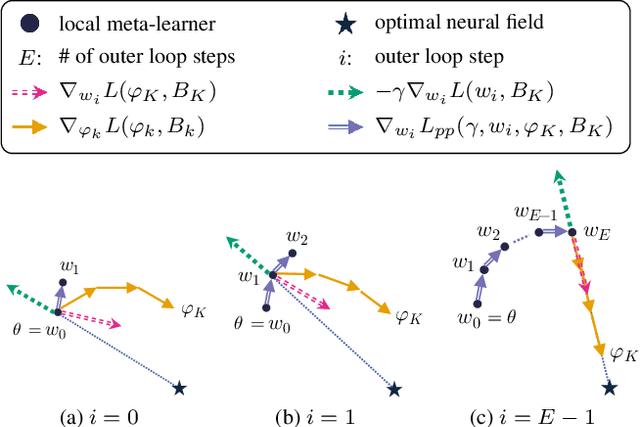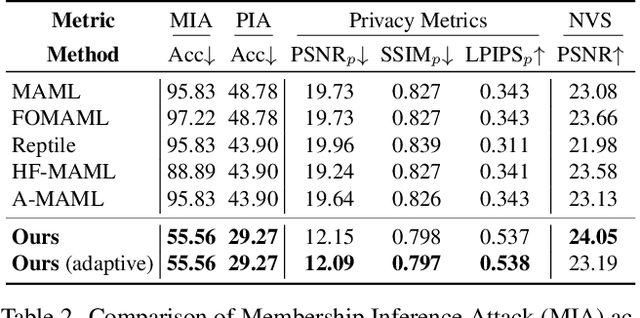Gunhee Kim
Think, Verbalize, then Speak: Bridging Complex Thoughts and Comprehensible Speech
Sep 19, 2025Abstract:Spoken dialogue systems increasingly employ large language models (LLMs) to leverage their advanced reasoning capabilities. However, direct application of LLMs in spoken communication often yield suboptimal results due to mismatches between optimal textual and verbal delivery. While existing approaches adapt LLMs to produce speech-friendly outputs, their impact on reasoning performance remains underexplored. In this work, we propose Think-Verbalize-Speak, a framework that decouples reasoning from spoken delivery to preserve the full reasoning capacity of LLMs. Central to our method is verbalizing, an intermediate step that translates thoughts into natural, speech-ready text. We also introduce ReVerT, a latency-efficient verbalizer based on incremental and asynchronous summarization. Experiments across multiple benchmarks show that our method enhances speech naturalness and conciseness with minimal impact on reasoning. The project page with the dataset and the source code is available at https://yhytoto12.github.io/TVS-ReVerT
WoW-Bench: Evaluating Fine-Grained Acoustic Perception in Audio-Language Models via Marine Mammal Vocalizations
Aug 28, 2025Abstract:Large audio language models (LALMs) extend language understanding into the auditory domain, yet their ability to perform low-level listening, such as pitch and duration detection, remains underexplored. However, low-level listening is critical for real-world, out-of-distribution tasks where models must reason about unfamiliar sounds based on fine-grained acoustic cues. To address this gap, we introduce the World-of-Whale benchmark (WoW-Bench) to evaluate low-level auditory perception and cognition using marine mammal vocalizations. WoW-bench is composed of a Perception benchmark for categorizing novel sounds and a Cognition benchmark, inspired by Bloom's taxonomy, to assess the abilities to remember, understand, apply, and analyze sound events. For the Cognition benchmark, we additionally introduce distractor questions to evaluate whether models are truly solving problems through listening rather than relying on other heuristics. Experiments with state-of-the-art LALMs show performance far below human levels, indicating a need for stronger auditory grounding in LALMs.
Hybrid Deep Searcher: Integrating Parallel and Sequential Search Reasoning
Aug 26, 2025Abstract:Large reasoning models (LRMs) have demonstrated strong performance in complex, multi-step reasoning tasks. Existing methods enhance LRMs by sequentially integrating external knowledge retrieval; models iteratively generate queries, retrieve external information, and progressively reason over this information. However, purely sequential querying increases inference latency and context length, diminishing coherence and potentially reducing accuracy. To address these limitations, we introduce HDS-QA (Hybrid Deep Search QA), a synthetic dataset automatically generated from Natural Questions, explicitly designed to train LRMs to distinguish parallelizable from sequential queries. HDS-QA comprises hybrid-hop questions that combine parallelizable independent subqueries (executable simultaneously) and sequentially dependent subqueries (requiring step-by-step resolution), along with synthetic reasoning-querying-retrieval paths involving parallel queries. We fine-tune an LRM using HDS-QA, naming the model HybridDeepSearcher, which outperforms state-of-the-art baselines across multiple benchmarks, notably achieving +15.9 and +11.5 F1 on FanOutQA and a subset of BrowseComp, respectively, both requiring comprehensive and exhaustive search. Experimental results highlight two key advantages: HybridDeepSearcher reaches comparable accuracy with fewer search turns, significantly reducing inference latency, and it effectively scales as more turns are permitted. These results demonstrate the efficiency, scalability, and effectiveness of explicitly training LRMs to leverage hybrid parallel and sequential querying.
FedMeNF: Privacy-Preserving Federated Meta-Learning for Neural Fields
Aug 08, 2025



Abstract:Neural fields provide a memory-efficient representation of data, which can effectively handle diverse modalities and large-scale data. However, learning to map neural fields often requires large amounts of training data and computations, which can be limited to resource-constrained edge devices. One approach to tackle this limitation is to leverage Federated Meta-Learning (FML), but traditional FML approaches suffer from privacy leakage. To address these issues, we introduce a novel FML approach called FedMeNF. FedMeNF utilizes a new privacy-preserving loss function that regulates privacy leakage in the local meta-optimization. This enables the local meta-learner to optimize quickly and efficiently without retaining the client's private data. Our experiments demonstrate that FedMeNF achieves fast optimization speed and robust reconstruction performance, even with few-shot or non-IID data across diverse data modalities, while preserving client data privacy.
Cognitive Chain-of-Thought: Structured Multimodal Reasoning about Social Situations
Jul 27, 2025Abstract:Chain-of-Thought (CoT) prompting helps models think step by step. But what happens when they must see, understand, and judge-all at once? In visual tasks grounded in social context, where bridging perception with norm-grounded judgments is essential, flat CoT often breaks down. We introduce Cognitive Chain-of-Thought (CoCoT), a prompting strategy that scaffolds VLM reasoning through three cognitively inspired stages: perception, situation, and norm. Our experiments show that, across multiple multimodal benchmarks (including intent disambiguation, commonsense reasoning, and safety), CoCoT consistently outperforms CoT and direct prompting (+8\% on average). Our findings demonstrate that cognitively grounded reasoning stages enhance interpretability and social awareness in VLMs, paving the way for safer and more reliable multimodal systems.
ViSAGe: Video-to-Spatial Audio Generation
Jun 13, 2025Abstract:Spatial audio is essential for enhancing the immersiveness of audio-visual experiences, yet its production typically demands complex recording systems and specialized expertise. In this work, we address a novel problem of generating first-order ambisonics, a widely used spatial audio format, directly from silent videos. To support this task, we introduce YT-Ambigen, a dataset comprising 102K 5-second YouTube video clips paired with corresponding first-order ambisonics. We also propose new evaluation metrics to assess the spatial aspect of generated audio based on audio energy maps and saliency metrics. Furthermore, we present Video-to-Spatial Audio Generation (ViSAGe), an end-to-end framework that generates first-order ambisonics from silent video frames by leveraging CLIP visual features, autoregressive neural audio codec modeling with both directional and visual guidance. Experimental results demonstrate that ViSAGe produces plausible and coherent first-order ambisonics, outperforming two-stage approaches consisting of video-to-audio generation and audio spatialization. Qualitative examples further illustrate that ViSAGe generates temporally aligned high-quality spatial audio that adapts to viewpoint changes.
HalLoc: Token-level Localization of Hallucinations for Vision Language Models
Jun 12, 2025Abstract:Hallucinations pose a significant challenge to the reliability of large vision-language models, making their detection essential for ensuring accuracy in critical applications. Current detection methods often rely on computationally intensive models, leading to high latency and resource demands. Their definitive outcomes also fail to account for real-world scenarios where the line between hallucinated and truthful information is unclear. To address these issues, we propose HalLoc, a dataset designed for efficient, probabilistic hallucination detection. It features 150K token-level annotated samples, including hallucination types, across Visual Question Answering (VQA), instruction-following, and image captioning tasks. This dataset facilitates the development of models that detect hallucinations with graded confidence, enabling more informed user interactions. Additionally, we introduce a baseline model trained on HalLoc, offering low-overhead, concurrent hallucination detection during generation. The model can be seamlessly integrated into existing VLMs, improving reliability while preserving efficiency. The prospect of a robust plug-and-play hallucination detection module opens new avenues for enhancing the trustworthiness of vision-language models in real-world applications. The HalLoc dataset and code are publicly available at: https://github.com/dbsltm/cvpr25_halloc.
Can LLMs Deceive CLIP? Benchmarking Adversarial Compositionality of Pre-trained Multimodal Representation via Text Updates
May 28, 2025Abstract:While pre-trained multimodal representations (e.g., CLIP) have shown impressive capabilities, they exhibit significant compositional vulnerabilities leading to counterintuitive judgments. We introduce Multimodal Adversarial Compositionality (MAC), a benchmark that leverages large language models (LLMs) to generate deceptive text samples to exploit these vulnerabilities across different modalities and evaluates them through both sample-wise attack success rate and group-wise entropy-based diversity. To improve zero-shot methods, we propose a self-training approach that leverages rejection-sampling fine-tuning with diversity-promoting filtering, which enhances both attack success rate and sample diversity. Using smaller language models like Llama-3.1-8B, our approach demonstrates superior performance in revealing compositional vulnerabilities across various multimodal representations, including images, videos, and audios.
LPOI: Listwise Preference Optimization for Vision Language Models
May 27, 2025Abstract:Aligning large VLMs with human preferences is a challenging task, as methods like RLHF and DPO often overfit to textual information or exacerbate hallucinations. Although augmenting negative image samples partially addresses these pitfalls, no prior work has employed listwise preference optimization for VLMs, due to the complexity and cost of constructing listwise image samples. In this work, we propose LPOI, the first object-aware listwise preference optimization developed for reducing hallucinations in VLMs. LPOI identifies and masks a critical object in the image, and then interpolates the masked region between the positive and negative images to form a sequence of incrementally more complete images. The model is trained to rank these images in ascending order of object visibility, effectively reducing hallucinations while retaining visual fidelity. LPOI requires no extra annotations beyond standard pairwise preference data, as it automatically constructs the ranked lists through object masking and interpolation. Comprehensive experiments on MMHalBench, AMBER, and Object HalBench confirm that LPOI outperforms existing preference optimization methods in reducing hallucinations and enhancing VLM performance. We make the code available at https://github.com/fatemehpesaran310/lpoi.
Multi-Domain Audio Question Answering Toward Acoustic Content Reasoning in The DCASE 2025 Challenge
May 12, 2025Abstract:We present Task 5 of the DCASE 2025 Challenge: an Audio Question Answering (AQA) benchmark spanning multiple domains of sound understanding. This task defines three QA subsets (Bioacoustics, Temporal Soundscapes, and Complex QA) to test audio-language models on interactive question-answering over diverse acoustic scenes. We describe the dataset composition (from marine mammal calls to soundscapes and complex real-world clips), the evaluation protocol (top-1 accuracy with answer-shuffling robustness), and baseline systems (Qwen2-Audio-7B, AudioFlamingo 2, Gemini-2-Flash). Preliminary results on the development set are compared, showing strong variation across models and subsets. This challenge aims to advance the audio understanding and reasoning capabilities of audio-language models toward human-level acuity, which are crucial for enabling AI agents to perceive and interact about the world effectively.
 Add to Chrome
Add to Chrome Add to Firefox
Add to Firefox Add to Edge
Add to Edge